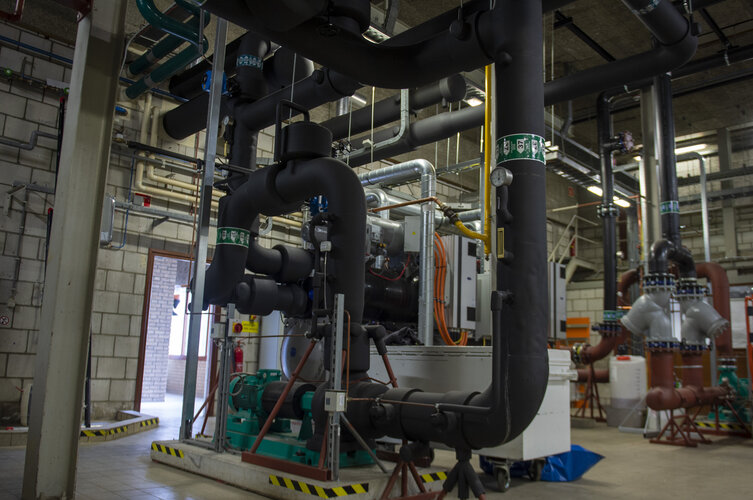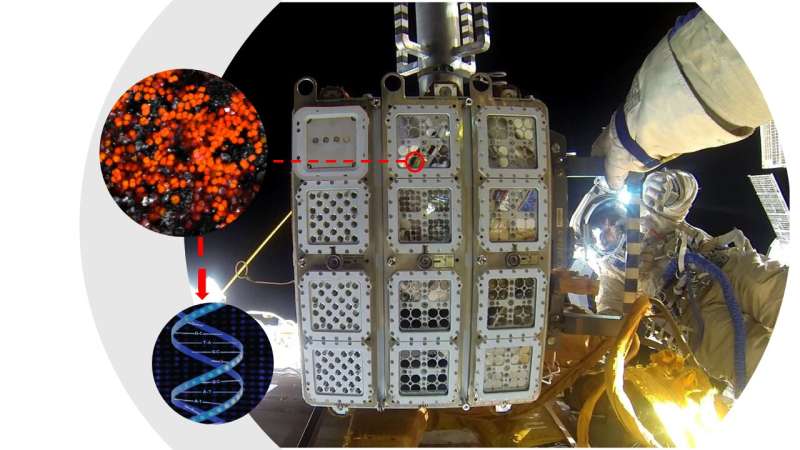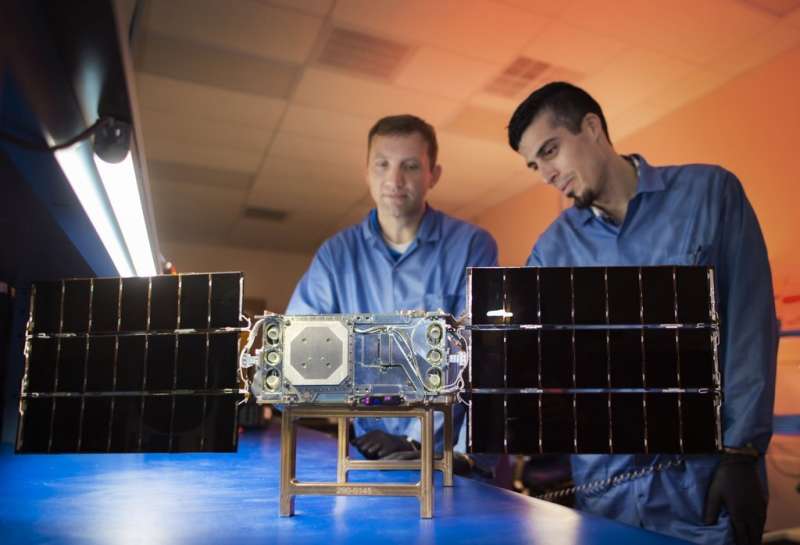
Copernical Team
China launches terrestrial ecosystem carbon monitoring satellite
 China successfully launched a terrestrial ecosystem carbon monitoring satellite and two other satellites from the Taiyuan Satellite Launch Center in north China's Shanxi Province Thursday.
The satellites were launched at 11:08 a.m. (Beijing Time) by a Long March-4B carrier rocket and entered the planned orbit successfully.
The carbon monitoring satellite is mainly used for terrestria
China successfully launched a terrestrial ecosystem carbon monitoring satellite and two other satellites from the Taiyuan Satellite Launch Center in north China's Shanxi Province Thursday.
The satellites were launched at 11:08 a.m. (Beijing Time) by a Long March-4B carrier rocket and entered the planned orbit successfully.
The carbon monitoring satellite is mainly used for terrestria NASA data on plant 'sweating' could help predict wildfire severity
 A new study uses data from the ECOSTRESS instrument aboard the space station to better understand why some parts of a wildfire burn more intensely than others. Even in drought-stricken California, not all areas face the same degree of wildfire risk.
A recent study featuring data from NASA's ECOSTRESS mission found relationships between the intensity of a wildfire and the water stress in pl
A new study uses data from the ECOSTRESS instrument aboard the space station to better understand why some parts of a wildfire burn more intensely than others. Even in drought-stricken California, not all areas face the same degree of wildfire risk.
A recent study featuring data from NASA's ECOSTRESS mission found relationships between the intensity of a wildfire and the water stress in pl Spaceflight and SAB partner to fly Sherpa OTVs on Vega missions
 Spaceflight Inc., the leading global launch services provider, has announced it signed an agreement with SAB Launch Services S.r.l. (SAB LS) to fly its Sherpa orbital transfer vehicles (OTVs) on Arianespace Vega missions. The agreement extends Spaceflight launch capacity on European missions managed by Arianespace for Spaceflight's OTV-based services on launches starting as soon as next year. Th
Spaceflight Inc., the leading global launch services provider, has announced it signed an agreement with SAB Launch Services S.r.l. (SAB LS) to fly its Sherpa orbital transfer vehicles (OTVs) on Arianespace Vega missions. The agreement extends Spaceflight launch capacity on European missions managed by Arianespace for Spaceflight's OTV-based services on launches starting as soon as next year. Th CST signs agreement with Gilmour Space for the launch of 50kg to LEO
 Commercial Space Technologies Ltd (CST) has signed an agreement with Australian launch provider, Gilmour Space Technologies, to offer a launch capacity of up to 50 kilograms on their Eris Block 1 vehicle.
The combination of Gilmour Space's orbital launch services and full CST oversight will offer an affordable launch solution to satellite customers needing access to custom low earth orbits
Commercial Space Technologies Ltd (CST) has signed an agreement with Australian launch provider, Gilmour Space Technologies, to offer a launch capacity of up to 50 kilograms on their Eris Block 1 vehicle.
The combination of Gilmour Space's orbital launch services and full CST oversight will offer an affordable launch solution to satellite customers needing access to custom low earth orbits AST SpaceMobile's BlueWalker 3 test satellite arrives at Cape Canaveral
 AST SpaceMobile, Inc. ("AST SpaceMobile") (NASDAQ: ASTS), the company building the first and only space-based cellular broadband network accessible directly by standard mobile phones, has announced that its BlueWalker 3 test satellite (BW3) has arrived at Cape Canaveral. The satellite recently departed an off-site testing facility in California after collecting flight data for the upcoming plann
AST SpaceMobile, Inc. ("AST SpaceMobile") (NASDAQ: ASTS), the company building the first and only space-based cellular broadband network accessible directly by standard mobile phones, has announced that its BlueWalker 3 test satellite (BW3) has arrived at Cape Canaveral. The satellite recently departed an off-site testing facility in California after collecting flight data for the upcoming plann Benchmark to keep popular orbits safer with collision avoidance kit
 With the most popular, revenue-generating orbits increasingly congested, Benchmark Space Systems has unveiled a breakthrough Collision Avoidance (ColA) Kit, featuring its heritage propulsion technology in a condensed package, that is easily and affordably deployed aboard electric propulsion (EP) and non-propulsive microsatellites and OTVs to help them quickly steer clear of approaching spacecraf
With the most popular, revenue-generating orbits increasingly congested, Benchmark Space Systems has unveiled a breakthrough Collision Avoidance (ColA) Kit, featuring its heritage propulsion technology in a condensed package, that is easily and affordably deployed aboard electric propulsion (EP) and non-propulsive microsatellites and OTVs to help them quickly steer clear of approaching spacecraf NASA Announces New CubeSat Launch Initiative Partnership Opportunities
 NASA has announced a new round of opportunities through the agency's CubeSat Launch Initiative (CSLI) for CubeSat developers, including educational institutions, to conduct scientific investigations and technology demonstrations in space and contribute to the agency's exploration goals.
"Small satellites, such as CubeSats play a valuable role in the agency's educational, science, and techn
NASA has announced a new round of opportunities through the agency's CubeSat Launch Initiative (CSLI) for CubeSat developers, including educational institutions, to conduct scientific investigations and technology demonstrations in space and contribute to the agency's exploration goals.
"Small satellites, such as CubeSats play a valuable role in the agency's educational, science, and techn Keeping space centre’s cool
 Image:
Keeping space centre’s cool
Image:
Keeping space centre’s cool Exposed! International Space Station tests organisms, materials in space

Space may look empty, but it contains extreme temperatures, high levels of background radiation, micrometeoroids, and the unfiltered glare of the sun. In addition, materials and equipment on the outside of the International Space Station are exposed to atomic oxygen (AO) and other charged particles as it orbits the Earth at the very edge of our atmosphere.
First of NASA's SunRISE SmallSats rolls off production line

Six of NASA's SunRISE small satellites will work together, creating the largest radio telescope ever launched to detect and track hazardous explosive space weather events.
Building a 6-mile-wide (10-kilometer-wide) telescope in space may sound like science fiction. But through the combined power of six toaster-size satellites, that's what NASA's SunRISE will be: a huge radio telescope in orbit that will help deepen scientists' understanding of explosive space weather events.

